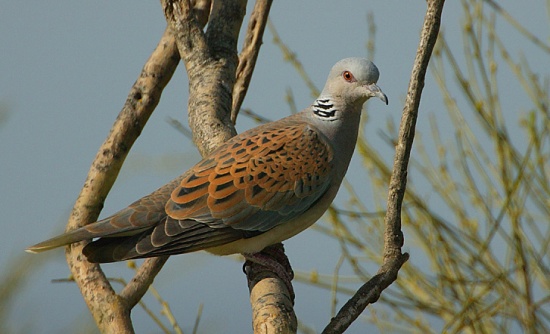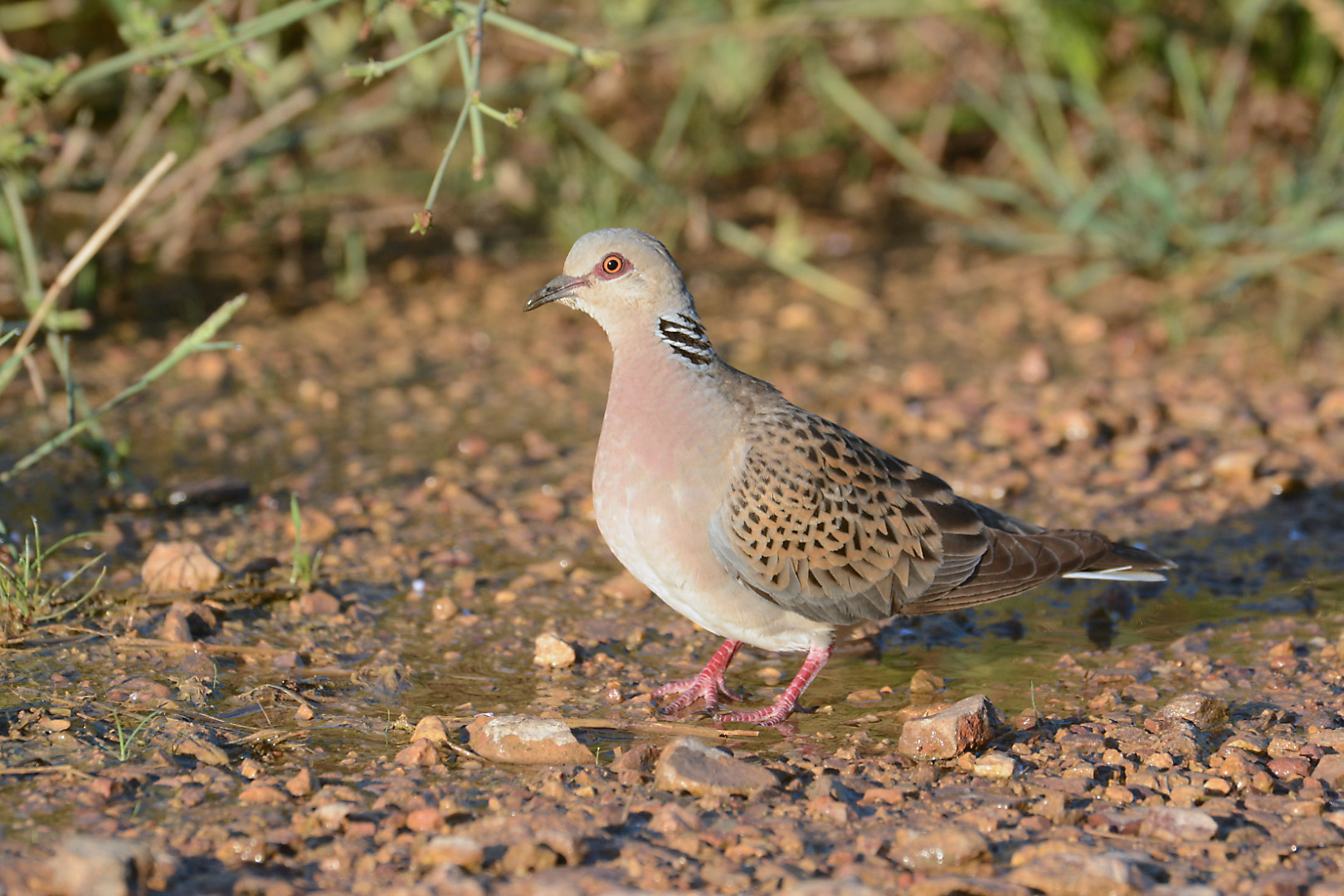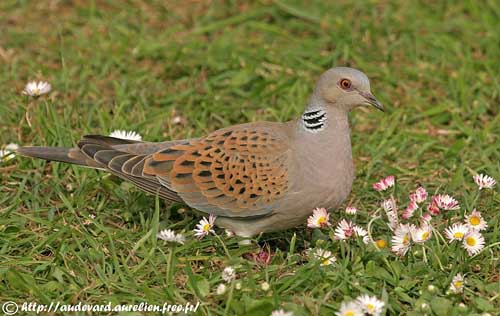
Streptopelia turtur
SUBFAMILY
Columbinae
TAXONOMY
Columba turtur Linnaeus, 1758, India, error _ England. Four
subspecies.
OTHER COMMON NAMES
English: Common turtledove; French: Tourterelle des bois;
German: Turteltaube; Spanish: Tortola Europea.
PHYSICAL CHARACTERISTICS
Old World turtle doves are generally medium to small in size,
around 12 in (30 cm) and 5.3 oz (150 g). They have long tails
and fairly well-developed display plumage on the neck, which
is shown in characteristic bow-coo displays. Plumage mostly
chestnut. Tips of tail feathers and outer rim of the tail white,
otherwise grayish. Display plumage is a patch of black tipped
with blue, and in the center nearly white.
DISTRIBUTION
Europe, North Africa, western Asia.
HABITAT
Park landscape with woody patches in agricultural areas.
BEHAVIOR
Long-distance migrant and, during migration, social. The bowcoo
includes half a dozen bobs in succession, with crop inflated
and bill pointing vertically down, with the courtship note
“coo” repeated many times without phrasing. A display flight
involves the male rising up steeply and going back to the perch
in a circular flight 100 ft (30 m) in diameter.
FEEDING ECOLOGY AND DIET
Forages on the ground, mostly seed from furmitory, plantain,
chickweed, and persicary.
REPRODUCTIVE BIOLOGY
Breeding starts in Europe mid-May, nests are placed in shrubs.
Pairs tend to aggregate in small colonies. Clutches are two
eggs incubated by the female at night and by the male during
the day for 13 days. Young remain in the nest for about 18
days. Turtledoves tend to be double brooded.
CONSERVATION STATUS
Not threatened, but population decline in some countries during
1970–1990 of 50%. Use of chemical herbicides seems to be
a serious factor in that they cause the decline or elimination of
some food plants.
SIGNIFICANCE TO HUMANS
Hunted, especially during migration and in winter range.
Photo Gallery of - European turtledove




 Animalia Life
Animalia Life